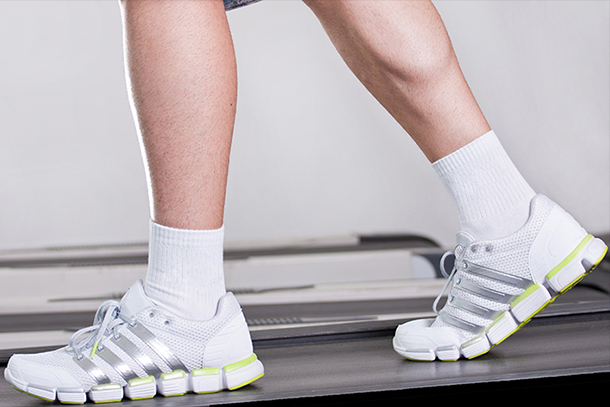Every 40 seconds, someone in the United States has a stroke. And while it is the fifth-leading cause of death in America, it is much more disabling than it is fatal.
Physical therapy for stroke survivors can often mean treatment focused on correcting walking asymmetries (such as a limp) so that the individual can walk in an observationally normal way.
But is this the best rehabilitation strategy?
That’s what James Finley, PhD, assistant professor in the USC Division of Biokinesiology and Physical Therapy, aims to investigate in a new study that was recently awarded a $1.6 million grant from the National Institutes of Health.
The study, titled “Toward a Mechanistic Understanding of Optimization Principles Underlying Hemiparetic Gait,” will examine the advantages and disadvantages associated with restoring symmetry in the walking patterns of survivors of stroke.
Using a device to measure oxygen consumption, treadmills meant to elicit a stumble response and a motion capture system to record it all, Finley hopes to better understand how correcting gait asymmetries impacts energy efficiency and fall risk.
“One thing we would like to do is assess the individual and find the focus areas for how to rehabilitate them,” Finley said. “How can we help an individual reduce energetic costs so they can walk longer distances? Can we train people to have a walking pattern that would lower their risk of falling?”
Changing the paradigm?
Finley’s findings could change the paradigm for how survivors of stroke are treated and help physical therapists better personalize walking rehabilitation.
For the study, Finley will partner with Stefan Schaal, PhD, professor of computer science and biomedical engineering at the USC Viterbi School of Engineering, to develop computer models of walking in people post-stroke.
“One of the most exciting parts of this work is that there are computational techniques that we can leverage to observe a behavior and ask questions like what is the relative contribution of different factors to that behavior,” Finley said. “How much might this walking pattern be meant to maximize stability or how much might be driven by energetic costs?”
The long-term goal would be to develop predictive models to be able to determine what walking patterns might be best for a survivor of stroke, he added.
“Ultimately, we want to improve people’s quality of life by giving them increased mobility,” Finley said. “If we can give them the confidence to move through environments that may be more challenging, then we can get them out of the house and into their communities, allowing them to have a more independent life.”
Serving as co-investigators on the four-year study are Associate Professors of Clinical Physical Therapy Julie Tilson, DPT, and Todd Schroeder, PhD, as well as Adjunct Assistant Professor of Clinical Physical Therapy Sara Mulroy, PhD.
— John Hobbs


